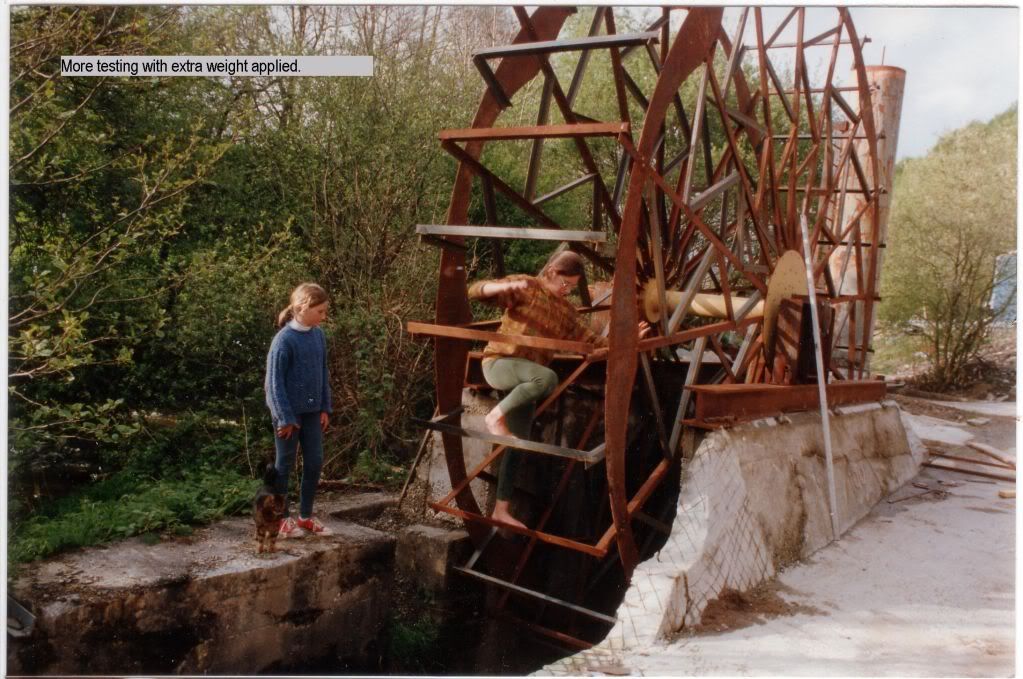The Scottish Government have published a consultation document
Permitted development rights are extended to certain types of development through the Town and Country Planning (General Permitted Development) (Scotland) Order 1992 (GPDO). They will now be examining the option for new permitted development rights for micro-renewable systems in the context of the review of the GPDO. Responses are due by the 1st February.
Existing planning policy can be found in the 2006 PAN 45 document. It’s a bit loopy in places, and obviously fully sold on the rooftop hype.

“Turbines should be sited in a way that creates a balanced composition that does not undermine the architectural integrity of the building or structure. They are generally positioned on the highest point of the roof, however, to reduce their visual impact it may be possible to locate them at a lower position provided they have a 0.5m clearance from the base of roof. Consideration should be given to positioning the micro-wind turbine at the rear of the property, where visual impact will typically be lessened.”
“Towers should be sited in a way that minimises the landscape impact. Whilst tall towers and hilltop locations will be best for capturing maximum wind energy, smaller towers and low lying locations should still be able to generate sufficient energy to meet the requirements of an average home.”
“Careful consideration should be made to the desired height of the turbine. While it will be important to avoid undue turbulence and areas of low wind speed, the choice of height needs to be carefully balanced with the visual prominence of the turbine in relation to existing buildings and surrounding landscape features. Where possible the height of towers should relate to the height of existing vertical elements in the landscape such as light columns, telegraph poles, trees, buildings and other structures. A turbine sited on a prominent ridge is generally not desirable. Where possible towers should be coloured to minimise the visual impact.”
In other words they didn’t really have a clue (in 2006) how important height actually is. Nor the importance of being well above surrounding obstacles. They actually believed that a rooftop wind turbine can have a 7 year payback.
Interestingly, noise issues did seem to be a big hurdle:
“Noise stemming from micro-wind turbines will generally be of an acceptable level. However, to protect nearby residents from any potential noise, a condition can be attached to any consent controlling the level of noise. A detailed noise assessment should not be required. Where turbines are fixed to a building, there may be a risk of noise disturbance from vibration to the building itself or neighbouring buildings and a condition might be attached that appropriate measures should be taken to mitigate any such vibration.”
The brand new Permitted Development Rights for Domestic Micro-Wind Turbines and Air-Source Heat Pumps Consultation takes noise more seriously
Their research “considered that where a free-standing MWT is in excess of 100 m from the nearest neighbour’s curtilage and the maximum height does not exceed 11.1 m; with a maximum blade diameter of 3.5 m (or swept area of 9.6 m2) PD rights could apply. Permitted developments of this scale are likely to be achievable in
mainly rural situations. The PD rights conferred by the amendments proposed here do not go as far as setting height or swept area thresholds.”
So it appears that permitted development status (no need to obtain permission, just a duty to notify) might apply to turbines that are more than 100 metres from a property boundary, and it is not clear to me whether any height or size restrictions will be applied (within reason).
They are not about to require compliance the the MCS process:
“Our proposals for PD rights meantime do not rely upon the application of MCS to provide further safeguards and assurances in circumstances where planning permission is not required.”
They also wisely note that:
“Wind trials continue to indicate that the performance of MWT is highly sensitive to a range of factors and in some locations, particularly parts of urban areas, they perform poorly.”
So it seems as if a bit of reality is seeping into the plan.
It may be worth responding with views on this consultation, although they seem to be in a rush and are unlikely to give any such input much weight. Personally, I think it’s a good idea to site turbines at a comfortable distance from neighbours houses. I do hope they allow decent tower heights. And of course these are not planning requirements as such… they are requirements for exemption from planning permission.











